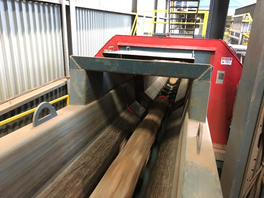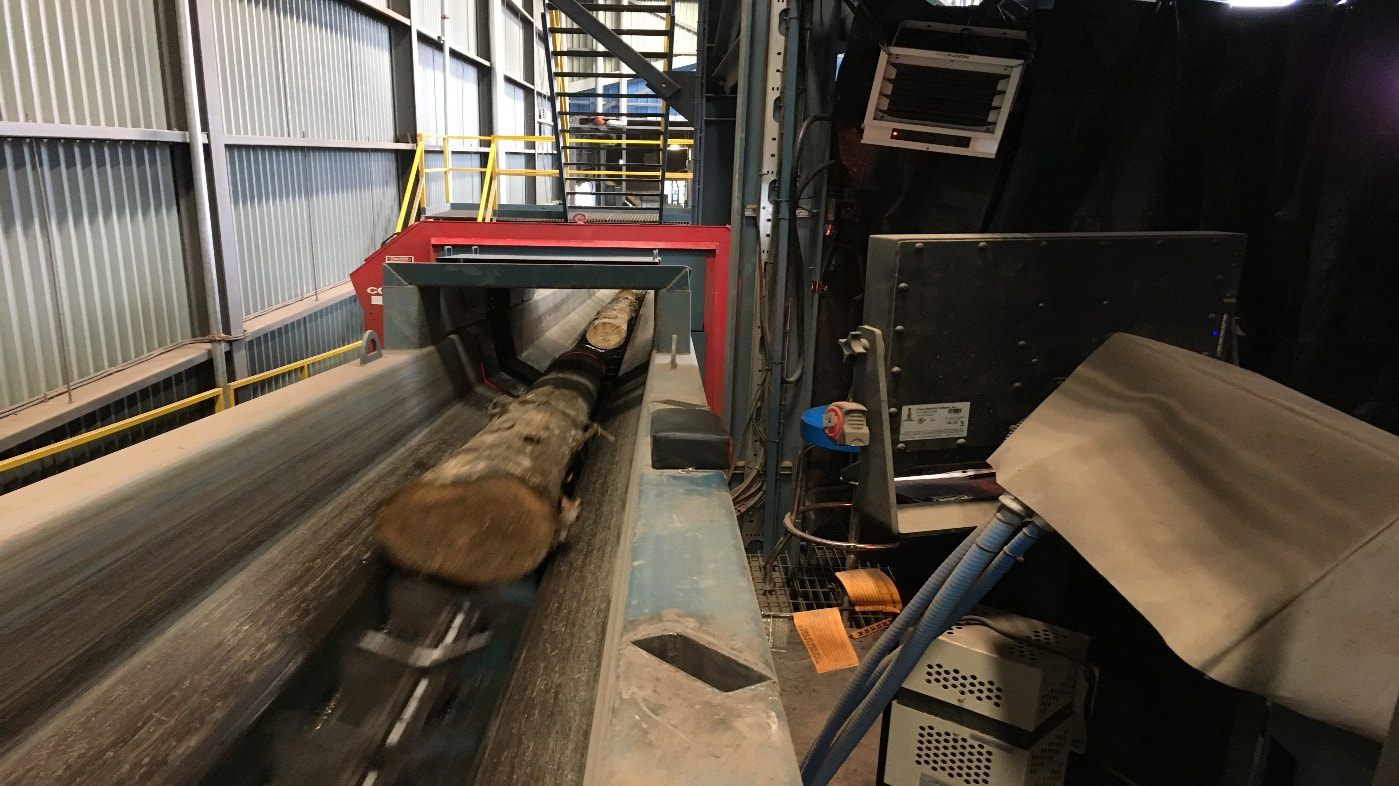 In Canada, timber harvesting is a multi-billion dollar industry and at its core is the measurement of harvested logs. Companies buy and sell logs nationally and internationally and Canadian provincial governments charge taxes based on the volume of timber harvested when trees are from government owned (crown) land. For centuries, the volume of logs has been measured manually. Today, advances in measurement technology are available to automate the process of measuring the length, width and diameter of a log to determine its volume as the log moves thorough the mill, greatly reducing production costs. This technology can also optimize how a log should be cut to obtain the most products, such as the number of 2x4s, with the least amount of waste. The introduction of new log scanning technology, using lasers to measure the logs, is transforming trade measurement in the forestry industry. It has enabled the automation of the measurement of harvested logs, thereby improving measurement accuracy of this increasingly precious resource. Log optimizers have been used in mills for many years. However, several years ago, questions started being asked about adapting these devices to meet the Canadian federal government’s measurement requirements for accuracy and performance. When approached to determine whether or not these devices could be approved for use in trade measurement transactions, Measurement Canada staff began working collaboratively with provincial government officials, log scanner manufacturers, mill operators and other industry stakeholders. Together they developed the technical specifications, test procedures and physical test standards required to evaluate and approve this new technology. Subsequent evaluation and testing ensured the first log scanner installation complied with established requirements for accuracy and performance under actual conditions of use. The development of these requirements posed a challenge for Measurement Canada. There were no established performance or testing criteria in place. The drafting of the specifications required understanding of the environment in which the devices would be used and multiple stakeholder diverse perspectives and positions. The technical requirements and procedures had to be sufficiently rigorous as to enable reliable and accurate measurement of timber, but not so demanding as to slow the introduction of this new technology into the Canadian forestry industry. In Canada, the approval and certification of log scanning technology for use in the forestry industry was a high profile, time sensitive project, closely monitored and scrutinized by provincial government forestry ministries and industry stakeholders. The development of approval and certification requirements was also watched closely by regulators, logging companies and other stakeholders internationally as other jurisdictions could consider adopting the requirements established by Measurement Canada in the future. To date, several log scanners (also known as Timber Dimensional Measuring Devices) have been approved for use in Canada. The introduction of this measurement technology in the Canadian forestry industry has positively impacted the efficiency of timber harvesting operations, contributed to Canadian companies’ access to new measurement technologies, enhanced the provinces’ confidence in timber measurement and improved the level of protection all parties to timber harvesting transactions receive against loss due to inaccurate measurement. Comments are closed.
|
Archives
October 2023
Categories
|
-
About APLMF
- APLMF Business
- Metrology Basics
-
Training & Development
-
News & Publications
-
Full Members Only
- Full Members
- Executive Area
-
Member Area
>
- 2023 Financial Report (Jan-Dec) Approval Voting
- 2022 Financial Report (Jan-Dec) Approval Voting
- 28th Report Approval Voting
- 2021 Financial Report (Jan-Dec) Approval Voting
- 2022 MOU and Rules Voting
- 27th Report Approval Voting
- 26th Minutes Approval Voting
- 2021-25 Strategic Plan Approval Voting
- 2019 Financial Report Approval Voting
- 25th Minutes Approval Voting
- 2018 Financial Report Approval Voting
- 2019 MOU with PTB Voting
- 2019 Executive Committee Appointment - Vote
- Working Group Area >
- Training Resources >
- Training
|
|
The Asia-Pacific Legal Metrology Forum APLMF is a grouping of legal metrology authorities, whose objective is the development of legal metrology and the promotion of free and open trade in the region through the harmonisation and removal of technical or administrative barriers to trade in the field of legal metrology.
APLMF 2004-2015
|
-
About APLMF
- APLMF Business
- Metrology Basics
-
Training & Development
-
News & Publications
-
Full Members Only
- Full Members
- Executive Area
-
Member Area
>
- 2023 Financial Report (Jan-Dec) Approval Voting
- 2022 Financial Report (Jan-Dec) Approval Voting
- 28th Report Approval Voting
- 2021 Financial Report (Jan-Dec) Approval Voting
- 2022 MOU and Rules Voting
- 27th Report Approval Voting
- 26th Minutes Approval Voting
- 2021-25 Strategic Plan Approval Voting
- 2019 Financial Report Approval Voting
- 25th Minutes Approval Voting
- 2018 Financial Report Approval Voting
- 2019 MOU with PTB Voting
- 2019 Executive Committee Appointment - Vote
- Working Group Area >
- Training Resources >
- Training


 RSS Feed
RSS Feed